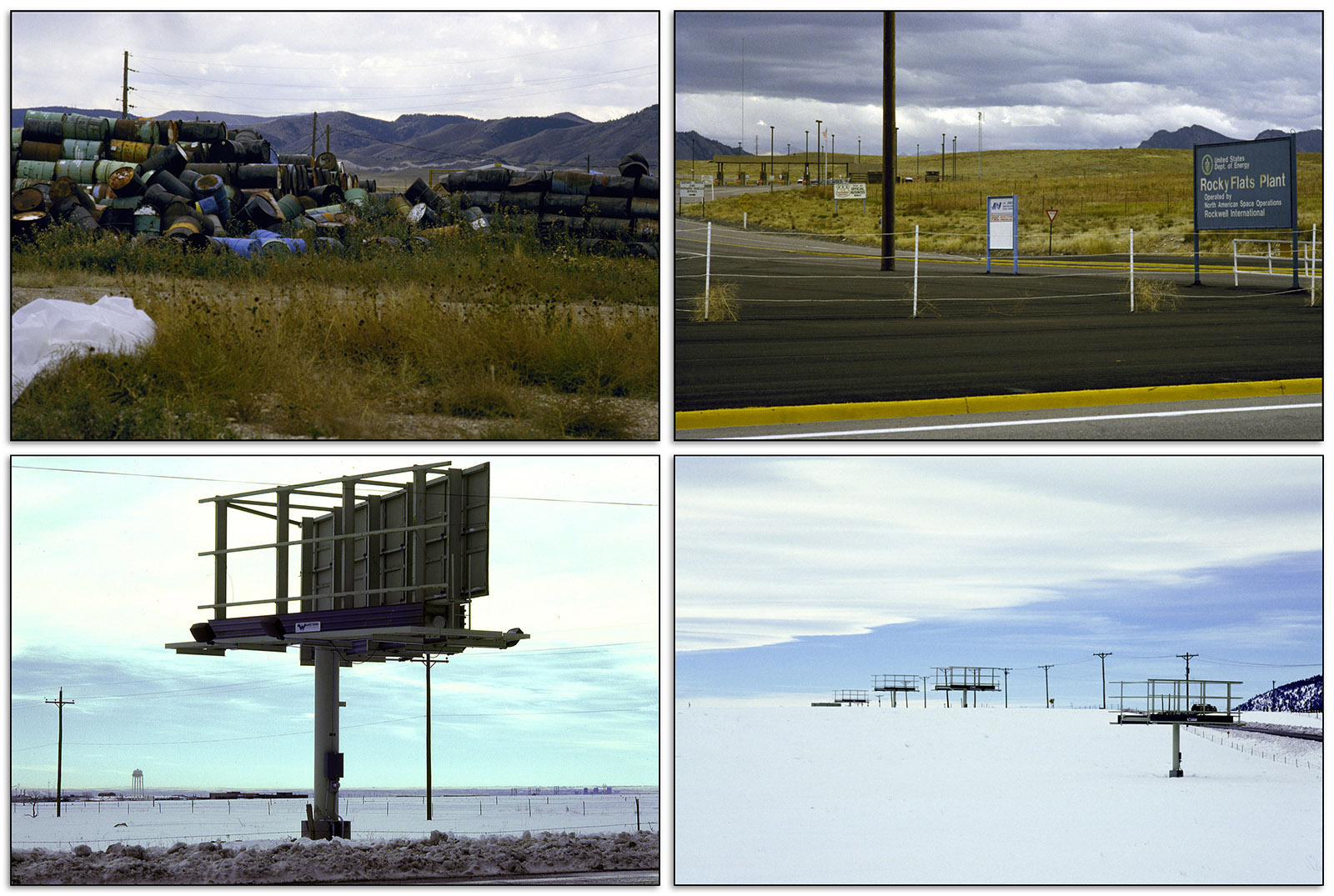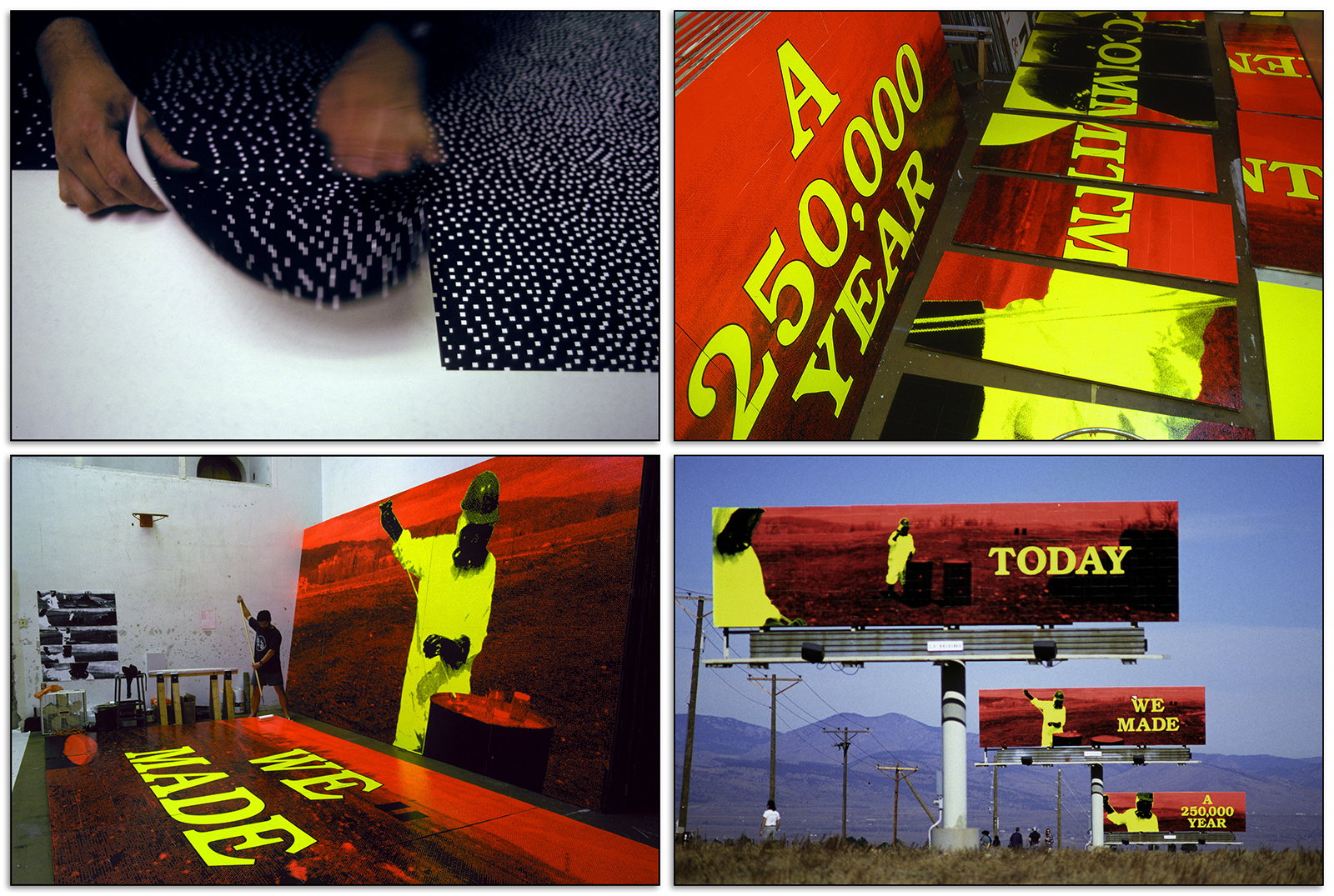Welcome to A People's Atlas of Nuclear Colorado
To experience the full richness of the Atlas, please view on desktop.
Navigating the Atlas
You may browse the Atlas by following the curated "paths" of information and interpretation provided by the editors. These paths roughly track the movement of radioactive materials from the earth, into weapons or energy sources, and then into unmanageable waste—along with the environmental, social, technical, and ethical ramifications of these processes. In addition to the stages of the production process, you may view in sequence the positivist, technocratic version of this story, or the often hidden or repressed shadow side to the industrial processing of nuclear materials.
Using the buttons on the left, you may also browse the Atlas's artworks and scholarly essays, access geolocated material on a map, and learn more about contributors to the project.
If you would like to contribute materials to the Atlas, please reach out to the editors: Sarah Kanouse (s.kanouse at northeastern.edu) and Shiloh Krupar (srk34 at georgetown.edu).
Cover Image by Shanna Merola, "An Invisible Yet Highly Energetic Form of Light," from Nuclear Winter.
Atlas design by Byse.
Funded by grants from Georgetown University and Northeastern University. Initial release September 2021.
Using the buttons on the left, you may also browse the Atlas's artworks and scholarly essays, access geolocated material on a map, and learn more about contributors to the project.
If you would like to contribute materials to the Atlas, please reach out to the editors: Sarah Kanouse (s.kanouse at northeastern.edu) and Shiloh Krupar (srk34 at georgetown.edu).
Cover Image by Shanna Merola, "An Invisible Yet Highly Energetic Form of Light," from Nuclear Winter.
Atlas design by Byse.
Funded by grants from Georgetown University and Northeastern University. Initial release September 2021.
John Craig Freeman, Operation Greenrun II - Media Coverage, 1990-1991, courtesy the artist
Artwork
In the second half of the twentieth century, Rocky Flats was one of a network of seventeen national nuclear weapons facilities operated under the direction of the Department of Energy. It was the only plant that manufactured the plutonium detonation systems, or triggers, for the nation’s nuclear arsenal throughout the Cold War.
In the summer of 1989, Rocky Flats was the subject of an FBI investigation. The resulting inquiry led to the suspension of plutonium operations and made public a history of gross environmental mismanagement, including the detection of sixty-two pounds of plutonium dust in the ductwork of the ventilation system (enough to build six nuclear weapons).
Before I had arrived in Boulder to pursue an MFA at the University of Colorado, a group of environmentalists known as Citizens Against Billboards on Highway 93 had organized a successful boycott against a group of billboards that were lined up in a row, just outside the front gates of the Rocky Flats plant. The ads, located along one of the most scenic parts of the drive along the Front Range of the Rocky Mountains, were considered an eyesore. Plutonium contamination is, of course, invisible. Unable to convince local businesses to advertise on the billboards, the owner was driven out of business and the billboard structures stood empty for several years.
Aside from a nondescript water tower, which often appeared in television news reports, the invisible radio-toxic waste at Rocky Flats had no image.

I recognized the billboards' potential for public art and began making proposals, using early Macintosh desktop computing technology, for what would become the Operation Greenrun II public art project.
When Greenpeace learned of the project they agreed to fund the production cost, and I went to work in an old racquetball court at the University. Each of eleven 10′ x 40′ billboard faces were made of over 2,000 individual bitmap images printed on a simple office laser printer. Keep in mind that commercial billboards were hand painted at this time. The technology to print a billboard would not exist for another five years.
The project was unveiled on November 14, 1990.
Over the course of about a mile, the billboards read “Today,” “We Made,” “A 250,000 Year,” “Commitment.” The half-life of plutonium is a quarter of a million years.

The fallout began when one of the original billboard protesters resurfaced and launched a campaign against our use of the billboards. It was news images like this that gave the project the spectacle appeal it needed to vault it into international media attention.
The final decision to shutdown plutonium operations for good and shift the efforts at Rocky Flats to cleanup was quietly taken during the media firestorm that followed.
In the summer of 1989, Rocky Flats was the subject of an FBI investigation. The resulting inquiry led to the suspension of plutonium operations and made public a history of gross environmental mismanagement, including the detection of sixty-two pounds of plutonium dust in the ductwork of the ventilation system (enough to build six nuclear weapons).
Before I had arrived in Boulder to pursue an MFA at the University of Colorado, a group of environmentalists known as Citizens Against Billboards on Highway 93 had organized a successful boycott against a group of billboards that were lined up in a row, just outside the front gates of the Rocky Flats plant. The ads, located along one of the most scenic parts of the drive along the Front Range of the Rocky Mountains, were considered an eyesore. Plutonium contamination is, of course, invisible. Unable to convince local businesses to advertise on the billboards, the owner was driven out of business and the billboard structures stood empty for several years.
Aside from a nondescript water tower, which often appeared in television news reports, the invisible radio-toxic waste at Rocky Flats had no image.

John Craig Freeman, Operation Greenrun II - Rocky Flats Site, 1990, courtesy the artist
I recognized the billboards' potential for public art and began making proposals, using early Macintosh desktop computing technology, for what would become the Operation Greenrun II public art project.
When Greenpeace learned of the project they agreed to fund the production cost, and I went to work in an old racquetball court at the University. Each of eleven 10′ x 40′ billboard faces were made of over 2,000 individual bitmap images printed on a simple office laser printer. Keep in mind that commercial billboards were hand painted at this time. The technology to print a billboard would not exist for another five years.
The project was unveiled on November 14, 1990.
Over the course of about a mile, the billboards read “Today,” “We Made,” “A 250,000 Year,” “Commitment.” The half-life of plutonium is a quarter of a million years.

John Craig Freeman, Operation Greenrun II - Billboards, 1990, courtesy the artist
The fallout began when one of the original billboard protesters resurfaced and launched a campaign against our use of the billboards. It was news images like this that gave the project the spectacle appeal it needed to vault it into international media attention.
The final decision to shutdown plutonium operations for good and shift the efforts at Rocky Flats to cleanup was quietly taken during the media firestorm that followed.
Citation
John Craig Freeman, Operation Greenrun II, interventionist public art, eleven 10′x40′ mosaic laser prints on sequential billboards, Highway 93, Rocky Flats, Colorado, November 1990 through April 1991.Continue on "Friction"